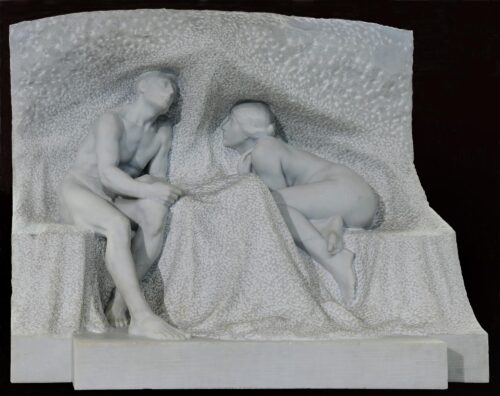
Dimitriadis Constantinos (1879 - 1943)
To the Dreams Left Behind and Defeated, 1909
Initially a pupil of Georgios Vroutos at the School of Arts, he went on to study at the Academie de la Grande Chaumiere and the Academie des Beaux-Arts in Paris from 1904, after a short spell in Munich. He returned to Greece after 26 years in 1930, having led a successful international career with numerous distinctions and workshop teaching in Paris and London. During the same year, he was appointed professor at the Athens School of Fine Arts and in 1936 elected member of the Academy of Athens.
His work has been shown in group exhibitions and Paris salons, such as the Salon des Artistes Francais and the Salon d’Automne, the Greek Artists’ Exhibition at the Grand Palais in Paris, the Venice Biennale (1936) as well as the Panhellenic exhibition in (1938).
His long sojourn in the French capital and his familiarity with European art, especially Rodin’s work, played a decisive role in shaping his own style. The French sculptor’s influence can be seen both in his choice of subject matter and in his treatment. The backbone of Dimitriadis’s work is the human figure, elevated into an allegorical symbol. His use of the human anatomy as an expressive means of fundamental importance, his accentuation of movement through the contrast of light and shadow, his endeavour to arrest the fleeting instant, his adoption of fragmentary forms, are all features that reveal how Dimitriadis adopted the spirit of Rodin’s art, which informs particularly his free compositions. In monuments, however, and above all in busts, a realistic approach prevails.

To the Dreams Left Behind and Defeated, 1909
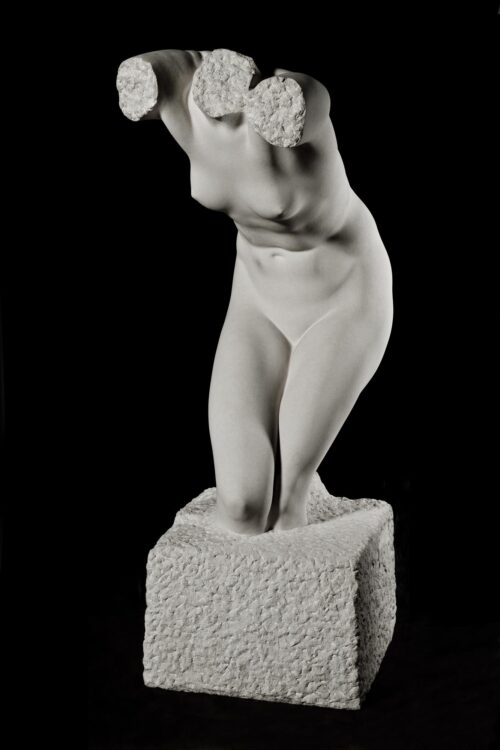
Female Torso, 1920
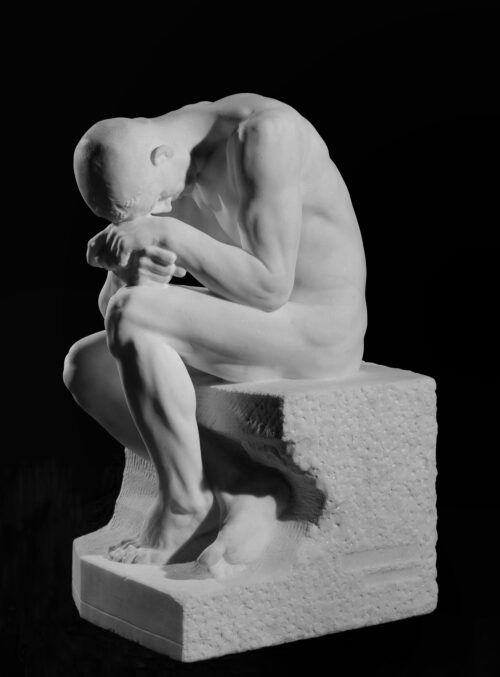
Thinker, 1907
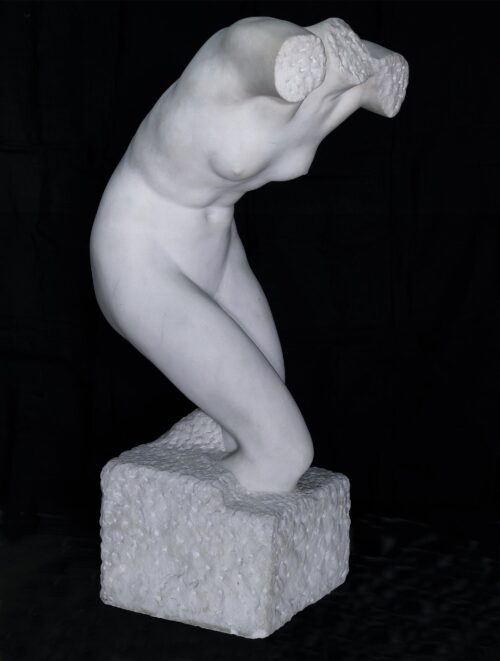
Female Torso, [1920]
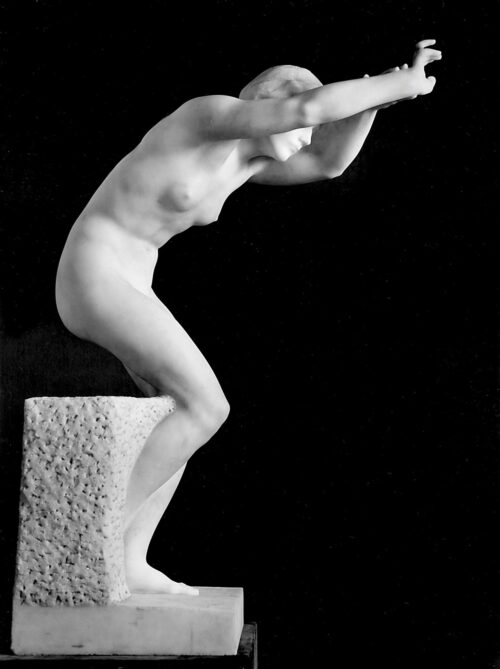
Nude Female Figure or Dancer, 1920
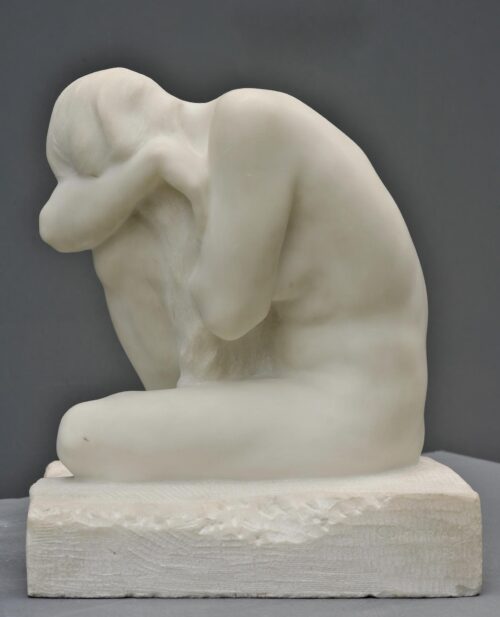
Crying Woman, 1909
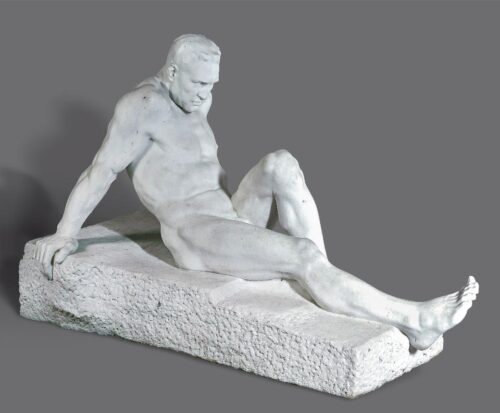
Man (or Endeavour), 1910
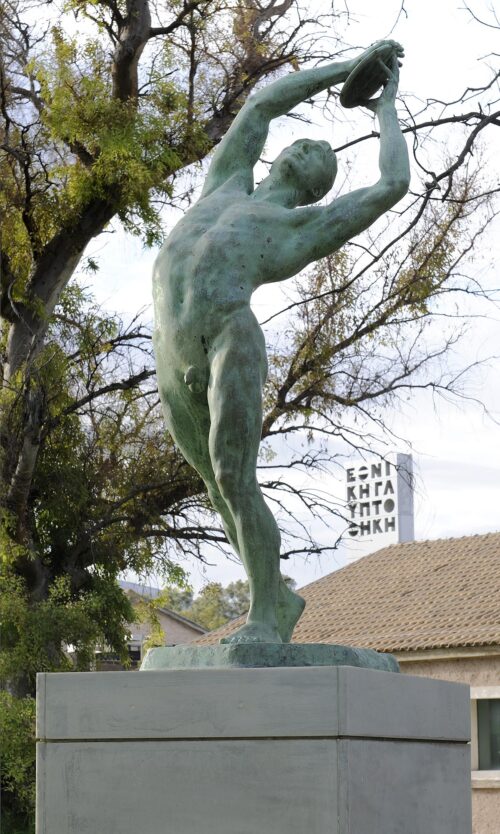
Discus-Thrower, 1924
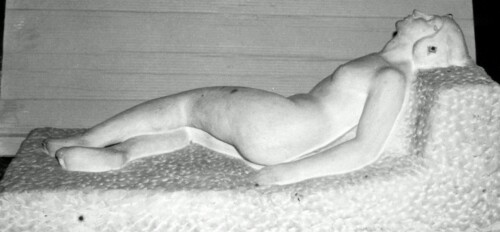

We use cookies to make our site work properly, to personalize content and ads, to provide social media features and to analyze our traffic. We also share information about how you use our site with our social media, advertising and analytics partners. Read the Cookies Policy.
These cookies are necessary for the website to function and cannot be switched off in our systems. They are usually only set in response to actions made by you which amount to a request for services, such as setting your privacy preferences, logging in or filling in forms. You can set your browser to block or alert you about these cookies, but some parts of the site will not then work. These cookies do not store any personally identifiable information.
If you disable this cookie, we will not be able to save your preferences. This means that every time you visit this website you will need to enable or disable cookies again.
These cookies tell us about how you use the site and they help us to make it better. For example these cookies count the number of visitors to our website and see how visitors move around when they are using it. This helps us to improve the way our site works, for example, by ensuring that users find what they are looking for easily. Our website uses Google Analytics for statistics reporting.
Please enable Strictly Necessary Cookies first so that we can save your preferences!